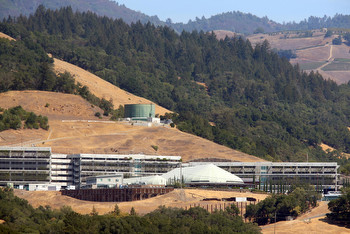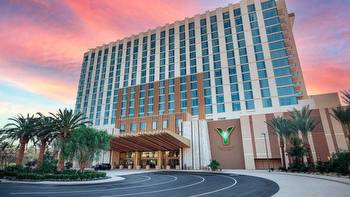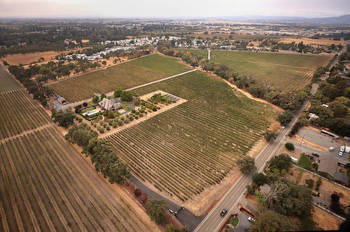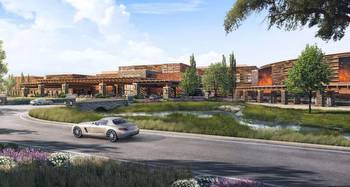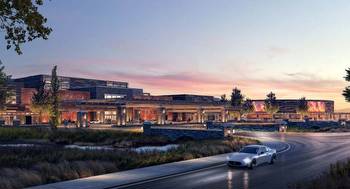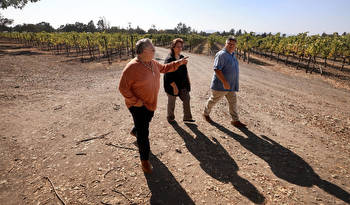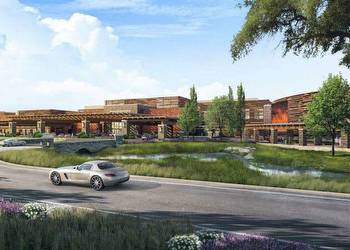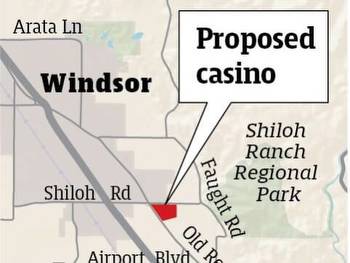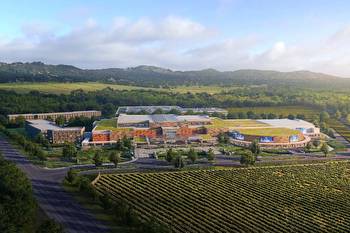Big expansion ahead at Graton Resort and Casino, as tribal owners look to solidify dominance in gaming industry
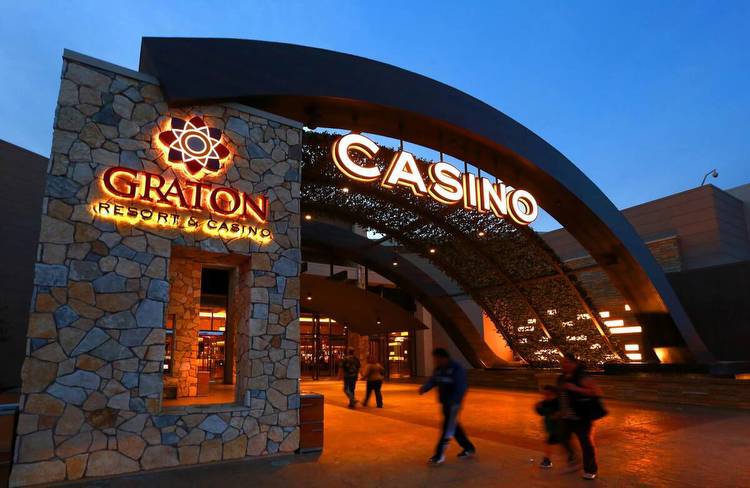
The Bay Area’s biggest gaming destination is about to get bigger — a lot bigger.
In what is expected to be one of the largest commercial building projects in Sonoma County in years, the Federated Indians of Graton Rancheria are lining up state and federal approvals to vastly expand the tribe’s $825 million Las Vegas-style casino and resort on its 254-acre reservation west of Highway 101 just outside Rohnert Park.
The proposal would double the size of the existing gaming floor, adding up to 3,000 slot machines, and another 200-plus hotel rooms, as well as a large performance theater and rooftop restaurant.
The expansion would solidify Graton as a powerhouse in California’s $8 billion annual tribal gaming industry, where its slot floor would rank behind only one other site, the Yaamava’ Resort & Casino in San Bernardino County.
Already one of the largest private employers in the North Bay, the expanded casino-resort off Wilfred Avenue will also become by far the largest lodging property in Sonoma County.
The scope of the plans has come into clearer focus after the tribe in March announced it had reached a new gaming compact with Gov. Gavin Newsom’s office that allows for the expansion. It cleared that hurdle only three months after release of a nearly 900-page draft environmental study of the expansion, which the tribe first announced a year ago.
Construction, expected to start this year pending final federal and state approvals, will support 2,000 temporary jobs, according to the tribe. Local unions are poised to do much of the work, as with earlier building projects that went into the now-10-year-old gaming resort.
“There’s no question that the casino has a very commanding presence here in Sonoma County and in our city,” said Marcela Piedra, city manager of Rohnert Park.
The city is expected to receive $251 million over the original 20-year agreement it reached with the tribe tied to the 2013 opening.
That deal, like a similar one struck with the county, is meant to offset the cost of public services for the casino property. It now can be renegotiated in the wake of Graton Rancheria securing last month its new state gaming compact.
Combined, the tribe pays Rohnert Park and the county more than $25 million annually, and both local governments stand to get more under the expansion, though how much isn’t yet clear.
Talks are starting between municipal and tribal representatives.
Opposition to the project, meanwhile, has been fairly muted, especially compared to the sustained outcry that clouded Graton Rancheria’s yearslong push for a casino starting back in the early 2000s. The first proposed location near Sears Point off Highway 37 proved so controversial it was sidelined and the land later protected under a conservation deal.
Added traffic from the expansion is expected to lengthen delays at several key intersections, according to the tribe’s environmental study.
Public safety calls also are expected to increase, but the tribe’s study found no significant impact on county and city agencies.
The analysis also found the tribe’s existing water supply, drawn from wells, is sufficient to cover increased demand.
“I’m not hearing any voices of protest,” said former Rohnert Park Council member Jake Mackenzie, who served on the council when the casino was first proposed and later opened.
While the community was sharply split 20 years ago, many of the impacts to the surrounding community haven’t been as severe as feared, he said.
Crowded, lucrative market
The expansion comes as the gaming business rebounds from setbacks early in the pandemic and as casinos retool operations to meet shifting customer demands and demographics.
Resort amenities, including entertainment venues, are increasingly prized, and industry experts say Graton’s addition of a theater and the enlargement of its resort will diversify the draw for visitors. That will help keep more dollars on the property.
The project could be a knockout punch for competing gaming destinations in the region, including the older and smaller River Rock Casino to the north near Geyserville, where tribal owners in late February reached a deal with the county to add a 300-room hotel and 60,000-square-foot casino on their present site.
A separate tribal casino, proposed by the Koi Nation near Windsor — and facing unified opposition from other tribes and local governments — could face an increasingly crowded market if it gains any traction.
Graton tribal officials say the expansion will help meet visitor demand and boost tribal revenues to support operation of their government, spur economic development on the 254-acre reservation and beyond and improve quality of life for its 1,400 members, according to documents submitted to local and state leaders as part of the expansion.








